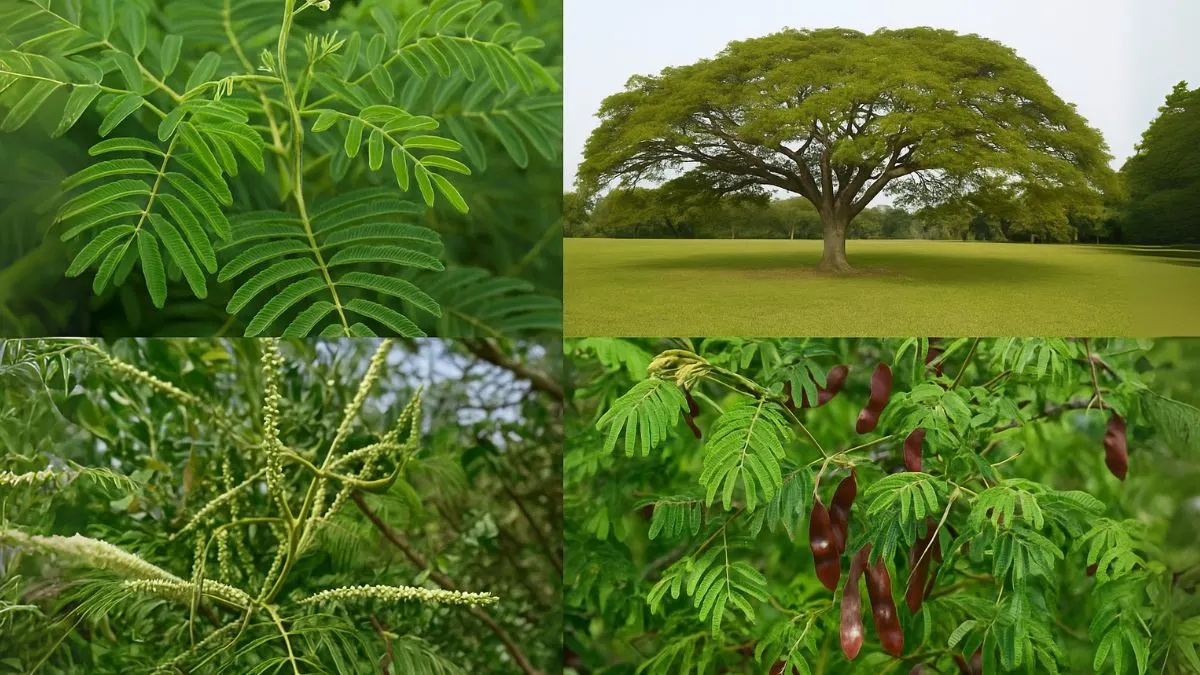The Acacia catechu—commonly known as “Katha” tree—is famous worldwide for its medicinal properties, cultural uses, and durable timber. Its extract, catechu, has been traditionally used in medicines, dyes, and even in food preparations.
Whether you are a professional grower, a student of botany, or simply someone who loves experimenting with unique plants, learning how to grow this hardy species is worth your time. In this guide, I’ll walk you through every step, from germinating seeds to planting young trees in the field.
Step 1: Seed Preparation and Germination

The first step in growing catechu is preparing the seeds properly.
- Always soak the seeds in warm water for 12–24 hours, then sow them in well-draining, sandy or loamy soil. This softens the hard seed coat and improves germination rates.
- Use small pots or a germination tray to control early growth.
- Cover the seeds lightly with soil and keep the surface moist.
From my own experience, soaking the seeds overnight drastically improved germination. When I skipped this step once, less than half sprouted. With soaking, almost all seeds grew healthy shoots.
Step 2: Creating the Right Environment
Seedlings need warmth and light to thrive.
- Place your pots or tray in a warm, sunny location with temperatures between 20–30°C.
- Acacia plants grow best when you grow it in a warm climate, so ensure they are protected from frost or cold drafts.
- Keep the soil lightly moist but avoid waterlogging.
In Canada or northern USA, growers often start seeds indoors with heat mats and then shift them outdoors once temperatures stabilize.
Also Read: How to Care for Indoor Prayer Plants
Step 3: Potting and Early Care
Once your seedlings develop 3–4 sets of leaves, you can transfer them to larger pots. Use soil that mirrors their natural environment: sandy or loamy with good drainage.
Here’s a simple soil guide:
Soil Type |
Suitability |
Why It Works |
Sandy Loam |
✅ |
Best balance of drainage and nutrients |
Heavy Clay |
❌ |
Poor drainage, risk of root rot |
Sandy Soil |
✅ |
Encourages strong root development |
Keep watering moderate—just enough to keep the soil moist without turning soggy.
Step 4: Field Planting
When your seedlings are strong enough, usually at 3–6 months old, you can move them to their permanent home.
- Plant 3–6 months old seedlings at 2×4 or 4x6m spacing for healthy growth.
- Dig deep pits (30–45 cm) and fill them with loose soil before transplanting.
- Water immediately after planting to help roots settle.
Spacing is crucial. When I tried planting too close together, the trees competed for nutrients and grew weak. The correct spacing ensured straight, tall, and strong growth.
Also Read: How to Grow Lavender for Endless Fragrance and Stunning Blooms
Step 5: Care and Maintenance
Growing Acacia catechu successfully doesn’t end at planting. Ongoing care matters.
- Weed regularly to prevent competition for nutrients.
- Add organic compost once a year to boost growth.
- Prune dead or weak branches to maintain tree health.
- Water young plants weekly during dry months, but established trees tolerate drought well.
With this care routine, the trees become resilient, providing shade and thriving even in challenging conditions.
Global Relevance: Acacia Catechu in Canada, USA, and Beyond
- In Canada, it’s mostly grown as an ornamental or in botanical gardens due to its exotic value. Indoor seed starting is common here.
- In the USA, especially in southern states with warm climates, catechu adapts beautifully outdoors.
- Globally, it is valued for its wood, medicinal extracts, and environmental benefits like soil improvement and erosion control.
This global adaptability makes catechu a fascinating plant for enthusiasts and professionals alike.
Personal Experience: From Seed to Sapling
The first time I grew catechu, I underestimated the importance of warmth. I placed my seeds in a cooler part of the house, and germination was slow and weak. Later, when I moved them to a sunny, warm corner (about 25°C), growth improved dramatically. The lesson was clear: consistent warmth is the key to strong seedlings.
Common Mistakes to Avoid
- Skipping seed soaking: Without soaking, germination rates drop sharply.
- Poor soil choice: Ignoring the advice to sow in well-draining, sandy or loamy soil often leads to root rot.
- Wrong climate: Forgetting that you must grow it in a warm climate leads to stunted growth.
- Improper spacing: Crowding seedlings instead of following the 2×4 or 4x6m spacing recommendation weakens trees.
Also Read: 5 Gorgeous Bird of Paradise Plants That Bring the Tropics Home
Key Takeaways for Success
Growing Acacia catechu is rewarding when done right. Remember:
- Always soak the seeds in warm water for 12–24 hours, then sow them in well-draining, sandy or loamy soil.
- Place your pots or tray in a warm, sunny location with temperatures between 20–30°C.
- You must grow it in a warm climate for best results.
- For field planting, plant 3–6 months old seedlings at 2×4 or 4x6m spacing.
👉 Whether you’re in Canada, the USA, or anywhere else in the world, catechu can become a rewarding part of your gardening journey with the right care.






